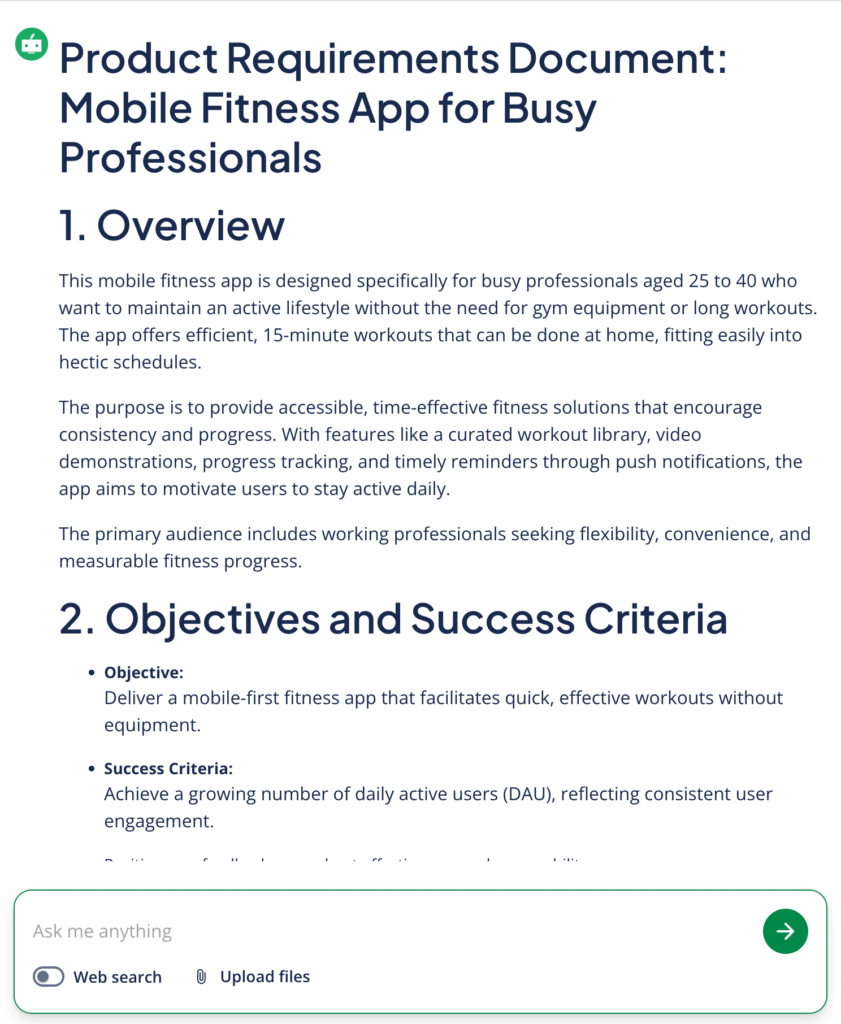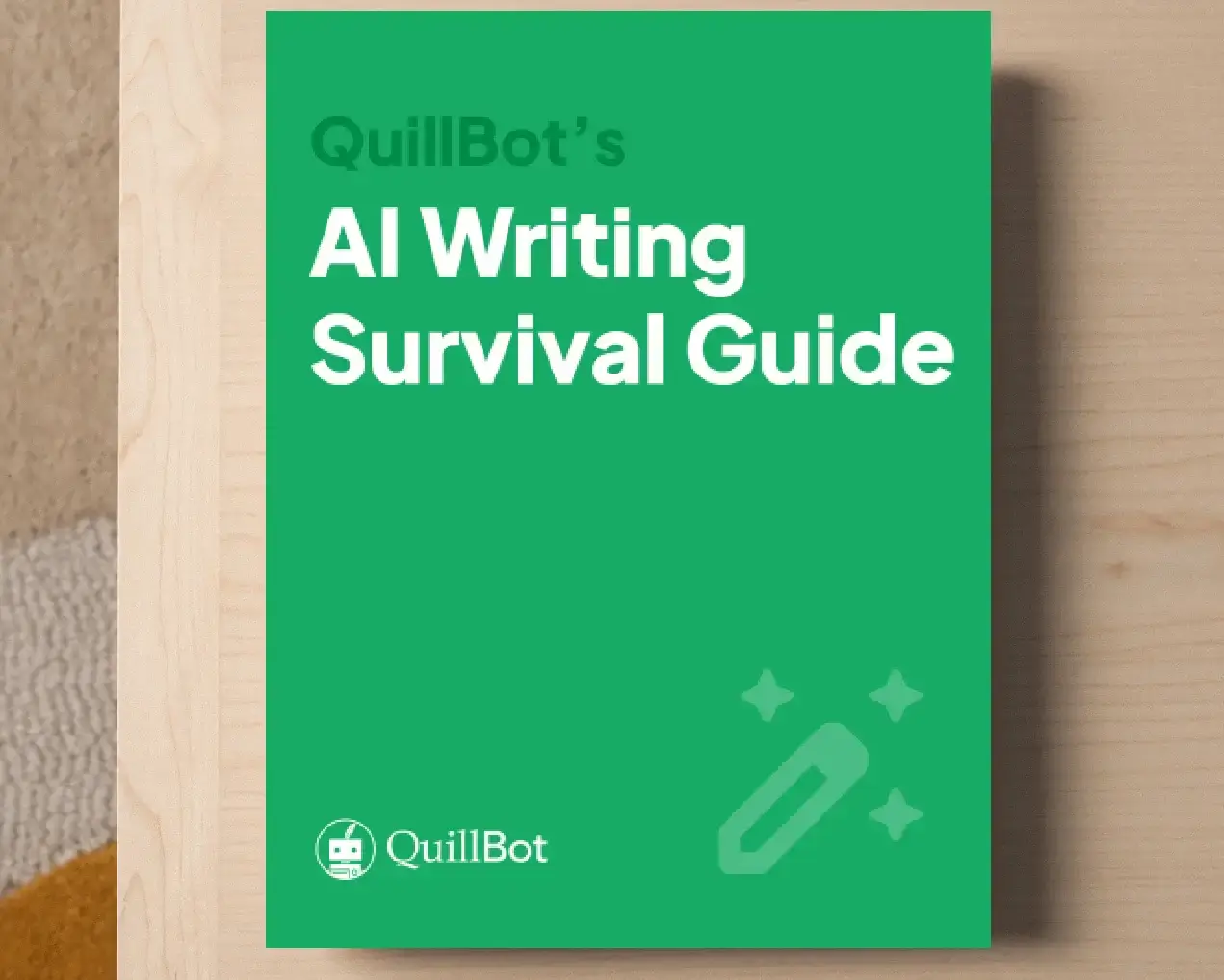What is a PRD? | Meaning & How to Write With AI
A product requirements document (PRD) defines what product you’re building, why you’re building it, and what it should do. It acts as a single source of truth for product development.
Writing a PRD can be detail-heavy and time-consuming, but it’s one of the most important steps in product development. QuillBot’s free AI PRD generator helps you draft PRDs more efficiently, so your team can focus on building instead of getting stuck in documentation.
PRD meaning
PRD means “product requirements document,” and it outlines the required features and functions of a product. It explains what a product should do, but it shouldn’t specify exactly how a product works; leaving the “how” open allows developers and designers to apply their knowledge and expertise.
A PRD guides a product’s design, development, and testing for product managers, developers, designers, and other stakeholders. A strong PRD ensures clear communication across teams, alignment on goals and scope, and reduced risk.
How to write a PRD
There are different approaches as to how to write a PRD, with some documents being more streamlined and others being more extensive. That said, product management experts agree on one thing: a strong PRD needs cross-functional collaboration.
Step 1: Draft your PRD
Draft your PRD, including the following sections:
- Overview: State the product name, purpose, and business case. Include some top-level details about your target audience.
- Objectives and success criteria: Outline what goals you have for the product and explain how success will be measured (KPIs, adoption, revenue impact, etc.).
- Key features and requirements: Detail each feature and expected behavior. Include a user scenario that narrates how these features contribute to the user experience.
- Constraints and assumptions: List any constraints to the product’s functionality and anticipate potential blockers, both internal and external.
- Dependencies and stakeholders: Briefly explain which teams and stakeholders are involved and in what capacity.
- Timeline and milestones: Chunk the project into phases or milestones. Keep this broad to allow for flexibility.
- Conclusion: Reiterate the product purpose and list next steps to help orient the team going forward.
Step 2: Get feedback
A PRD is typically drafted by a product manager but should receive feedback from implicated teams. Send your draft to these teams (e.g., engineering, design, project, marketing) and ask them to weigh in. Incorporate the feedback that strengthens the PRD, and put other ideas in an “icebox” that you can always access later.
Step 3: Share with stakeholders for approval
Once you’ve edited your PRD to incorporate feedback, it’s time to share it with company stakeholders. Prepare a well-organized presentation that explains the document. After that, you can send the actual document and have stakeholders review it for final approval.
Using an AI PRD Generator
AI tools can make PRD writing faster and easier by turning your project details into a structured draft. The key is writing a strong prompt; be as specific as possible about what you’re building, your goals, constraints, and who the document is for.
Use these questions to guide your prompt:
- What’s the product?
- Why are you building it?
- What goals and KPIs define success?
- Who are the users, and what are their needs?
- What features and functions must the product include?
- What non-functional requirements matter most?
- What resources, dependencies, and constraints exist?
- Who will review and approve the PRD?
“Write a PRD for a mobile fitness app for busy professionals. Goal: 15-minute equipment-free workouts at home, with success measured by daily active users. Users: professionals 25–40. Core features: workout library, video demos, progress tracking, and push notifications. Non-functional: mobile-first, scalable, iOS + Android. Dependencies: payments and wearables. Timeline: MVP in 6 months. Risks: limited budget and integration delays. Audience: product and engineering teams.”
With this prompt, the tool generates a PRD that begins with:
The PRD also includes the following sections: “Key Features and Requirements,” “Constraints and Assumptions,” “Dependencies and Stakeholders,” “Timeline and Milestones,” and “Conclusion.”
You can also ask the tool to change or refine the PRD via the chat box on the same page.
Frequently asked questions about AI PRD generator
- What is one responsibility of product management?
-
One key responsibility of product management is defining product requirements and aligning them with customer needs.
This includes writing a product requirement document (PRD) during the initial product definition stage. You can simplify the PRD process by using QuillBot’s PRD generator.
- What’s the difference between a PRD and MRD?
-
The difference between a PRD and an MRD is the purpose.
A PRD (or product requirements document) defines what a product will do and how it will work. An MRD (market requirements document) explains why the product is needed and who it’s for.
Create a clear PRD in minutes with QuillBot’s PRD creator.
Cite this Quillbot article
We encourage the use of reliable sources in all types of writing. You can copy and paste the citation or click the "Cite this article" button to automatically add it to our free Citation Generator.
Santoro, K. (2025, September 03). What is a PRD? | Meaning & How to Write With AI. Quillbot. Retrieved December 7, 2025, from https://quillbot.com/blog/ai-writing-tools/prd-meaning/


